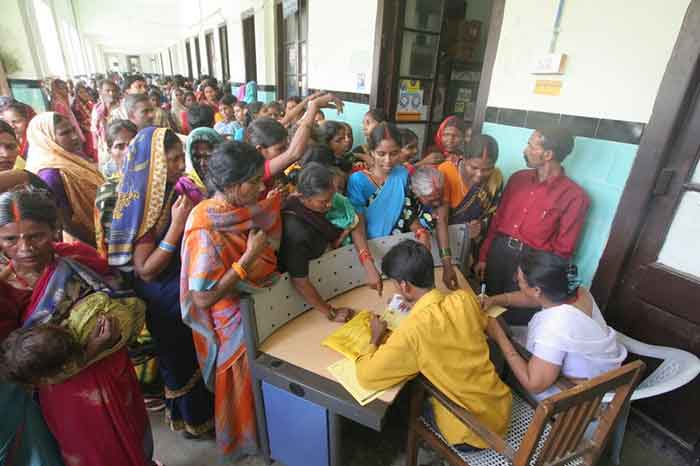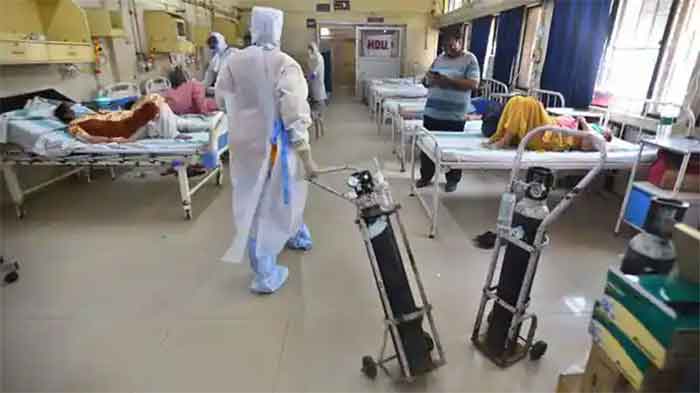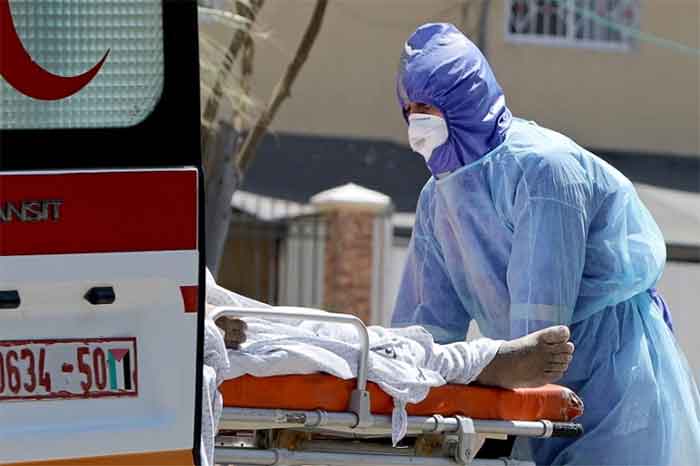
In today’s world, where almost everything is a click away for many, access to healthcare, descents into alcoholism, and misperceptions about illnesses can still take us back to the eighteenth century. In this brief article, the idea is to give an overview of the interplay between the aforementioned determinants while presenting some evidence from the ground.
The World Health Organization (WHO) defined human health as “a state of complete physical, mental, and social well-being and not merely the absence of disease or infirmity.”; and mental health as “a state of well-being in which the individual realizes his or her own abilities, can cope with the normal stresses of life, can work productively and fruitfully, and is able to make a contribution to his or her community”. The main factors influencing health of an individual vary from socio-economic status to individual habits and behaviours. As any society moves from one demographic to another, the challenges to health and well-being of its citizens also change accordingly. While many of these challenges can be tackled by the timely and good healthcare facilities, ignorance and relying on unrealistic treatment methods and mechanisms can lead to harmful effects, which is not so such an unusual case in developing societies.
India, with a population of 1,324,171,354 in 2017, stood second as the most populous country in the world. More than 50% of its population ranks below the age of 25 and more than 65% below the age of 35. With 158,789,287 people between the age group of 0-6 years, 69% of the population still living in the rural areas, 74.03% of India’s people are literate. One-fifth of maternal deaths and one-quarter of child deaths in the world occur in India. Life expectancy at birth is 63 years for males and 66 for females, and the under-5 mortality rate of 69 per 1000 births in India falls behind the South-East Asia regional average. While health outcomes have improved over time, they continue to be patterned along dimensions such as gender, caste, wealth, education, and geography. Substantial geographic inequalities in health outcomes in India, with life expectancy ranging between 56 years in Madhya Pradesh to 74 years in Kerala; a difference of 18 years, which is higher than the provincial differences in life expectancy in China, or the inter-state differences in the United States.
Perceptions and utilization of preventive services such as antenatal care and immunizations also vary among different groups of society by gender, socioeconomic status, and geography, household wealth and education, caste, and place of residence (rural vs urban). Inadequate access to appropriate maternal health services remains an important determinant of maternal mortality. General hospitalization rates also vary by gender, wealth, and urban-rural residence.
Perceptions about illness among patients and the people close to them play an important role in the overall health condition of individuals and society. These illness perceptions, directly influence the individual’s emotional response to the illness and their coping behaviour such as adherence to treatment. An important point to remember is that the patient’s view of the symptoms caused by the illness may be quite different from that of the medical staff treating the condition. Although, there may not be any clear and direct correlation between the perception of illness among patients and the clinical diagnosis, these perceptions are associated with increased future disability and a slower recovery, independent of the initial medical severity of the condition. Then again, a very crucial question comes up, especially in developing societies like India, about a small percentage of the population relying on modern health facilities, rather than going to a traditional healer, or conducting self-medication or religious rituals.
Let us look at the challenges related to alcoholism. Although Max Mueller observed that there was no common root in the Aryan languages for wine or liquor, as per a World Health Organization report cited that one in every twenty Indian males have an addiction or alcohol related disorder; with 38.3 per cent of the world’s population consuming alcohol regularly. In comparison, thirty per cent of Indian population consumes alcohol regularly, with approximately 11% of Indians being moderate to heavy drinkers. Alcohol is available in close vicinity for majority of the population, and people in different areas (depending on their socio-economic class, literacy level etc.) drink with different frequencies and in varying amount. Alcoholism as well as treatment to alcoholism is a gradual process. The harmful psychological effects of uncontrolled alcohol consumption leads to serious threats to the society, including affecting the financial conditions of the individuals and families involved in it. Another report added that alcoholism increased by about 55 percent between 1992 and 2012. In 2012 alone about, 3.3 million deaths in India were attributed to alcohol consumption. This amounts to some 5.9 percent of the global deaths that year. Drunkenness and alcohol misuse by the male partner are associated with poor mental health and spousal violence among married women in India. Men’s alcohol problems increase the risk of depression in their female partners; exceeding the risks associated with women’s own alcohol use disorders or spousal violence. Gender inequities play a key role in women’s health, including in the impact of spousal violence. The prevalence of alcohol use among women has consistently been estimated at less than 5 percent. There is also a widespread notion that alcohol use is confined to tribal women, women of lower socio-economic status, commercial sex workers and to a limited upper crust of the rich, and not favored by women from the middle or upper socioeconomic classes. The public discourse on alcohol in India, has traditionally focused on the plight of women at the receiving end of alcohol-related violence and impoverishment. Clearly, alcohol misuse represents a public health crisis in India that is yet to receive adequate attention.
Alcohol dependence is both one of the most severe and most prevalent mental disorders. The World Health Organization estimates that 76.3 million people worldwide suffer from alcohol use disorders. About 4% of all deaths and 5% of all disability-adjusted life-years lost can be attributed to alcohol. The stigma of alcoholism is likely to aggravate these effects- it may hinder the seeking of professional and lay help, because people fear being labelled alcoholics and subsequently experiencing loss of status and discrimination. The stigma may contribute to social exclusion of those in particular need of social support. Further, the stigma may also produce structural discrimination against alcohol-dependent persons with regard to coverage of addiction treatment by private or public health insurance. People suffering from alcohol dependence (and from other addictions) are particularly severely stigmatized. They are less frequently regarded as mentally ill, they are held much more responsible for their condition, they provoke more social rejection and more negative emotions and they are at a particular risk of being structurally discriminated against. Only with regard to being dangerous, they are perceived similarly negative as people suffering from schizophrenia, and support for legal coercion in the United States was also stronger regarding schizophrenia. Most conceptions and perceptions of mental illness stigma in Indian society are negative, misinformed stereotypes.
Alcohol problems are more common among people with more severe mental health problems. This does not necessarily mean that alcohol causes severe mental illness. Evidence shows that people who consume high amounts of alcohol are vulnerable to increased risk of developing mental health problems and alcohol consumption can be a contributing factor to some mental health problems, such as depression.
Various scientific studies have shown that the mental disorders are also thought to be occurring due to less sexual desire, God’s punishment for their past sins and polluted air. People living in joint families than in nuclear families also believed that sadness and unhappiness cause mental disorders. Both in rural and urban areas many people believe that children do not get mental disorders, which means they have conception of adult-oriented mental disorders. Among the misconceptions the worst one is that mental illnesses are untreatable, besides accepting the fact that a family member can suffer from a mental illness.
In one of our ongoing studies, which covers several states in India, also has data from countries like UK, USA, Canada, Nepal and Russia, we found that while the more educated strata of the society is aware about mental health problems, the less educated ones are not. Further, people accept the insufficiency of mental health facilities in their surroundings but on the contrary do not accept the likelihood of a family member having a mental health disease. The results suggest a strong requirement to spread awareness regarding mental health to people, especially the less educated ones. In some regions, we find people are more interested in going to a religious preacher or treating alcohol addiction problem at home, while in others they are open to going to a specialist. The study also highlights and quantifies the difference between actual prevalence rates of mental health problems in India and the perceived likelihood among the population. The data for this study was collected by using door to door, and online survey. Individual involved this study come from various backgrounds- Dr. Sukant Khurana (a neuroscientist at CDRI), Mr. Ishan Goel (data scientist), Mr. Raamesh Gowri Raghavan (expert in behavioral biology and advertising) and Mr. Farooq Ali Khan (one of the coordinators of World Health Congress 2017).
Without doubt, we can say that India being a culturally loaded country with respect to perception towards illness and healthiness faces many challenges, which will be added with newer ones as the demographic changes take place. Existing infrastructure and facilities are not enough, misinformation and illiteracy adds fuel to fire. A joint effort, positive approach, stricter regulations, and health education could be just the new beginning towards making the society healthy-both mentally and physically.
Ashish Kumar Singh is a Doctoral Candidate at Higher School of Economics- The National Research University, Moscow. He can be contacted at [email protected]















































